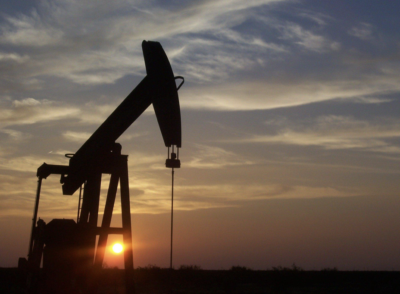
In addition to all the human costs of coronavirus, it has devastated economies around the world. One industry that it has mainly affected is the oil industry, with oil prices falling to its lowest levels ever. The industry got some much needed good news beforehand when the Organization of the Petroleum Exporting Countries (OPEC) and Russia agreed to cut production by 9.7 million barrels per day. Alas, this was not enough to stop the price per barrel to slump even further.
Despite all this volatility, interest in oil investing has risen to an all-time high; after all, as the experts say, “buy low and sell high.”
How the Oil Market Reacted to the Coronavirus Outbreak
The initial outbreak of coronavirus across the world in the first few months of 2020 caused demand for oil to plummet, due to a dramatic decrease of industrial production and an equally dramatic decrease in travel. This, in turn, led to falling oil prices.
To counteract this, many oil-producing nations sought to significantly lower production. But two of the world’s leading producers of oil, Saudi Arabia and Russia, could not agree on production cuts, which brought on a price war between the two and an increase in oil production. This not only caused oil prices to tumble even more, but it also helped exasperate the U.S. stock market crash. It also severely damaged the U.S. oil industry, in particularly shale, which is only sustainable when oil prices are high.
Because of this, President Trump took an active role in brokering an agreement between Saudi Arabia and Russia to end the price war.
The Oil Production Cut and What It Means for the Market
Whether or not the price war ended because of U.S. pressure on Saudi Arabia and Russia, which included threats of enacting anti-dumping laws and even sanctions, many of the world’s top oil producers finally agreed on April 12 to cut production starting at the beginning of May. The 9.7-million-barrel cut will continue until the end of June when the cuts will be reduced to 7.7 million barrels per day. Then, from January of 2021 until April of 2022, these oil producers will cut production by 5.8 million barrels per day.
It is important to note, though, that these countries can change these numbers in the future at will. It is also important to note that the agreement does not include many large oil-producing nations, such as the United States and Canada. President Trump has even said that the U.S. government would not directly lower production, but instead, he indicated that market forces would lower it.
The initial reduction among those taking part in the agreement amounts to a whopping 10% decrease in the world’s oil output. Still, oil prices continued to fall in reaction to the agreement as fear remained high. Though many in the industry, such as U.S. Energy Secretary Dan Brouillette, believed that this number could have been considerably worse without the agreed production cuts and that the oil market had finally bottomed out. The verdict is still out as countries across the world slowly come back to economic life, but still are concerned about a relapse of the effect of the virus.
The Outlook for Oil in the Coming Year and Beyond
Unsurprisingly, the outlook for oil in the coming year is grim. OPEC is forecasting that, in 2020, demand for oil worldwide will decrease by 6.9%, which equates to 6.9 million barrels of oil per day. But there is optimism that, once the pandemic ends, demand for oil will rebound. Secretary Brouillette is even bullish on shale, saying that its long-term outlook is positive. But he has also indicated that the pandemic may shutter many shale producers for good. It is a belief held by many that the big oil companies with cash liquidity will acquire many of the smaller companies forced out of business due to the pandemic. For this reason, many believe buying stocks in Exxon, ConocoPhillips, and Chevron will be a wise long-term investment.
The Environmental Impact from the Cratering of Oil Prices
The impact of coronavirus has not been all negative. Some people, such as trend forecaster Li Edelkoort believe that the pandemic may save the human race by positively changing consumer behavior. Nowhere has this been felt more than in the environment, which has benefited greatly in recent months from the reduction of the burning of fuels for energy.
The levels of pollution and greenhouse gas emissions have fallen considerably due to the pandemic, with pollution levels in New York down 50% and emission levels in China down 25%. While not all of this can be directly attributed to reduced oil use, much of it can. Some incredible pictures of Earth’s recovery can be seen all around from the Canals of Venice all the way to the International Space Station.
The question is whether this trend will continue after the pandemic ends.


